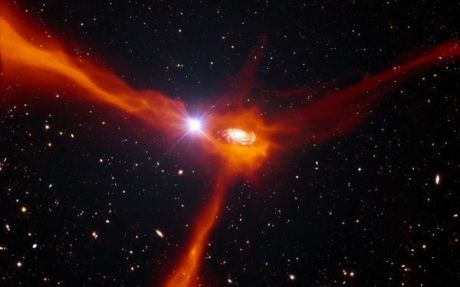New insight into sources of gamma-rays in our Galaxy

New insight into sources of gamma-rays in our Galaxy
Black holes, neutron stars and novae are some of the Universe's marvels generating gamma, the most energetic form of radiation. EU-funded scientists shed further insight into burning questions such as what produces this much energy.
One of the main goals of the National Aeronautics and Space
Administration's (NASA) Fermi Gamma-ray Space telescope is to enhance
understanding of the origins of high-energy radiation. Scanning the
entire sky Fermi is providing a deep survey of the gamma-ray sky. Highly
energetic gamma rays travel in straight lines through the Universe,
thus providing clues to the location of particle acceleration that gives
rise to cosmic rays.
Astronomers working on the project NONTHERMTRANSIENTS (Understanding the variable and transient non-thermal emission of galactic sources) used this space telescope to investigate highly variable celestial sources of gamma rays from within our galaxy. Their aim was to advance understanding of the physical properties and processes occurring in transient and variable galactic sources that are capable of accelerating particles to high energies.
In 2010, scientists using Fermi were surprised to discover, for the first time, that a nova can also emit gamma rays. NONTHERMTRANSIENTS scientists analysed and characterised the gamma-ray novae observed to date that have led to new theoretical emission models.
Binary systems emitting gamma rays were also explored, scientists discovered bright transient activity from the millisecond pulsar (MSP) PSR J1028+0032 using Fermi. Simultaneous multi-wavelength observations revealed that the source had transitioned into a low-mass X-ray binary (LMXB) state. This is an exciting result as it has long been assumed that MSPs are a result of neutron stars being spun up by a binary companion in an LMXB and this is the first time that an MSP was seen to transition back into an LMXB. NONTHERMTRANSIENTS scientists also discovered another Fermi source, XSS J12270-4859, transition the other way from LMXB to MSP. These are exciting results for understanding binary system evolution.
Scientists completed the catalogues of the gamma-ray and hard X-ray sky as observed by Fermi and INTEGRAL. Such data should help observe variable astrophysical objects, revolutionising understanding of the high-energy physics processes and acting as a pathfinder for the Cherenkov Telescope Array – the next-generation ground-based very-high-energy gamma-ray instrument under development – will have improved sensitivity to gamma-ray radiation.
published: 2015-10-09